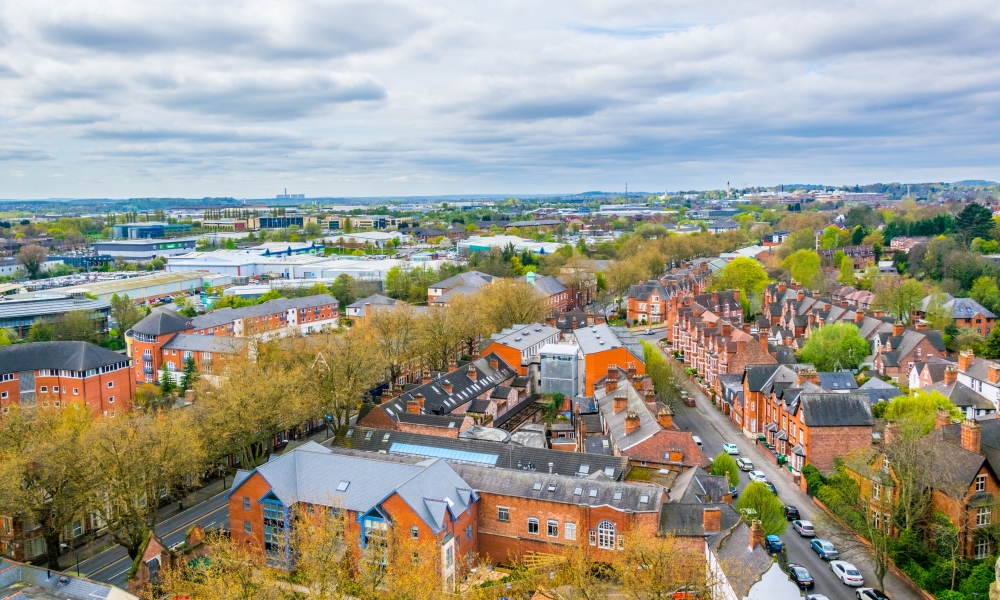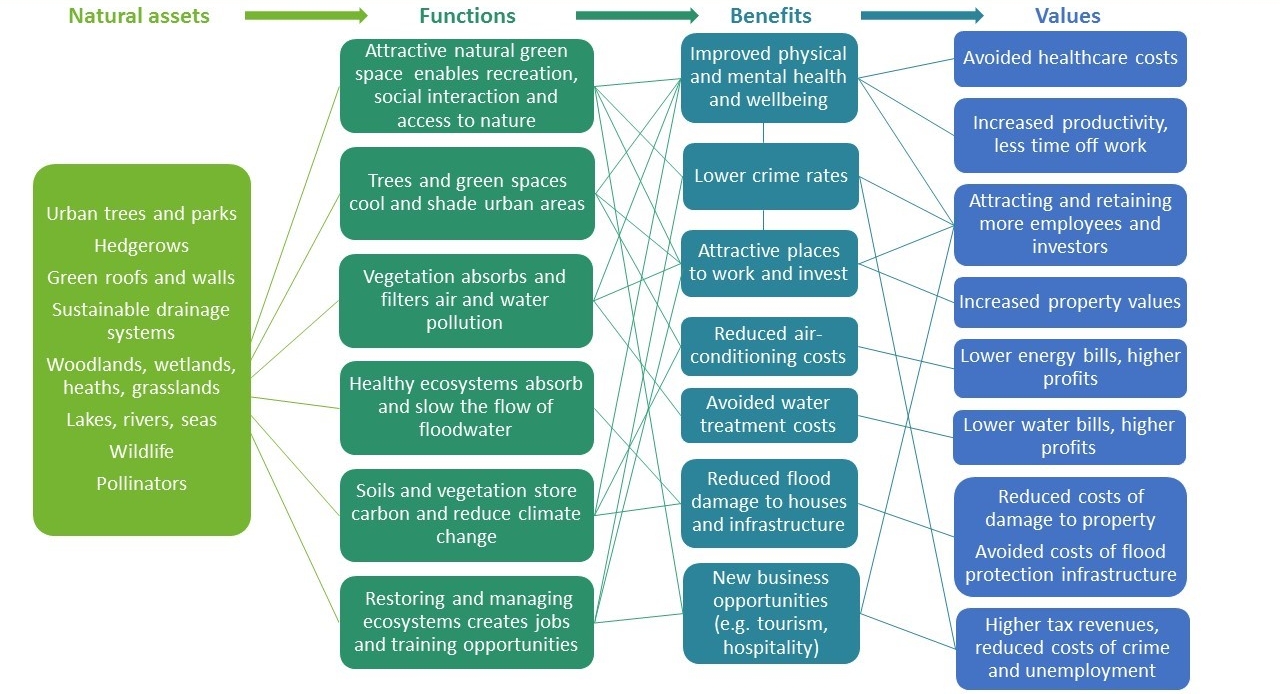How can Nature-based Solutions support the Levelling-up agenda?
Associated Sprints
Recent News
- Agile at the BES Symposium
- Youth-Led Research and Policy
- Greenhouse gas uncertainties: expanding the impact of research

Agile researchers have developed an evidence summary to show how revisions to UK planning policy could help reverse the ongoing loss of green spaces and deliver high quality green infrastructure to tackle inequality and support urban regeneration.
Nature-rich green and blue spaces have vast potential to deliver health, environmental and economic benefits, but only 3% of people in our most deprived communities have access to green space within a 15-minute walk. Over the last few decades, a large body of academic evidence has emerged to show how green space provides benefits through multiple pathways (see figure). Safe and attractive green space encourages more physical activity, social interaction and exposure to nature, all of which have benefits for numerous aspects of physical and mental health, as well as building community cohesion and reducing crime. In addition, well designed ‘green and blue infrastructure’ such as parks, street trees, sustainable drainage systems and green roofs can help to reduce stormwater runoff, provide urban cooling and shade in heatwaves, reduce air and water pollution and suppress noise. These benefits can reduce the economic costs of healthcare and flood damage, as well as attracting more businesses, investors and shoppers into the local area.

Disadvantaged groups could benefit more from access to green space, but ironically, they also have less green space nearby. The Levelling up and Regeneration Bill currently passing through Parliament is an opportunity to put nature at the fore of regenerating deprived areas and reducing social and health inequalities. However, the present version of the Bill neglects the role of nature and could even undermine it by weakening planning protections – replacing the current well-established system of Environmental Impact Assessments and Strategic Environmental Assessments with undefined ‘Environmental Outcome Reports’.
Agile researchers have compiled evidence on the benefits of green space for levelling up, to support recommendations on how to strengthen the bill. See our policy brief and longer research brief.
We also responded to a consultation on proposed revisions to the National Planning Policy Framework (NPPF). The NPPF is a hugely influential document which sets out the expectations for the content of Local Plans – the documents prepared by Local Planning Authorities that determine where development can take place and what type of development should be delivered.
The proposed revisions to the NPPF contain several welcome proposals to reduce over-supply of land for housing development, which is driving loss of green spaces. It also sought advice on how to integrate NbS and green infrastructure into local plans, and reduce the environmental impacts of development (including a potential ban on the use of artificial grass). We emphasised the need to protect existing natural features such as mature trees and hedgerows, integrating them into the design of new developments, and to build in connected networks of multifunctional green and blue space in line with Natural England’s new Green Infrastructure Standards.
The consultation included an interesting suggestion that past developer behaviour could be taken into account when granting future planning permission. This could be a powerful tool for tackling well-known problems with developers who breach planning permission, fail to deliver promised biodiversity enhancements or pre-emptively destroy habitats to avoid having to pay compensation.
A key proposal is for new National Development Management Plans, which will take control of elements that should be common to all local plans. In theory these could be used to set strong standards for nature protection and enhancement, but there is also a danger that they could weaken standards and remove control for local communities. The NPPF consultation now closed and we look forward to reading the government response in due course. Going forward, our Agile sprint will continue to assess potential policy measures to support government in scaling up high quality NbS across the UK, as well as delivering bottom-up tools to help local practitioners deliver well-designed and monitored NbS.


